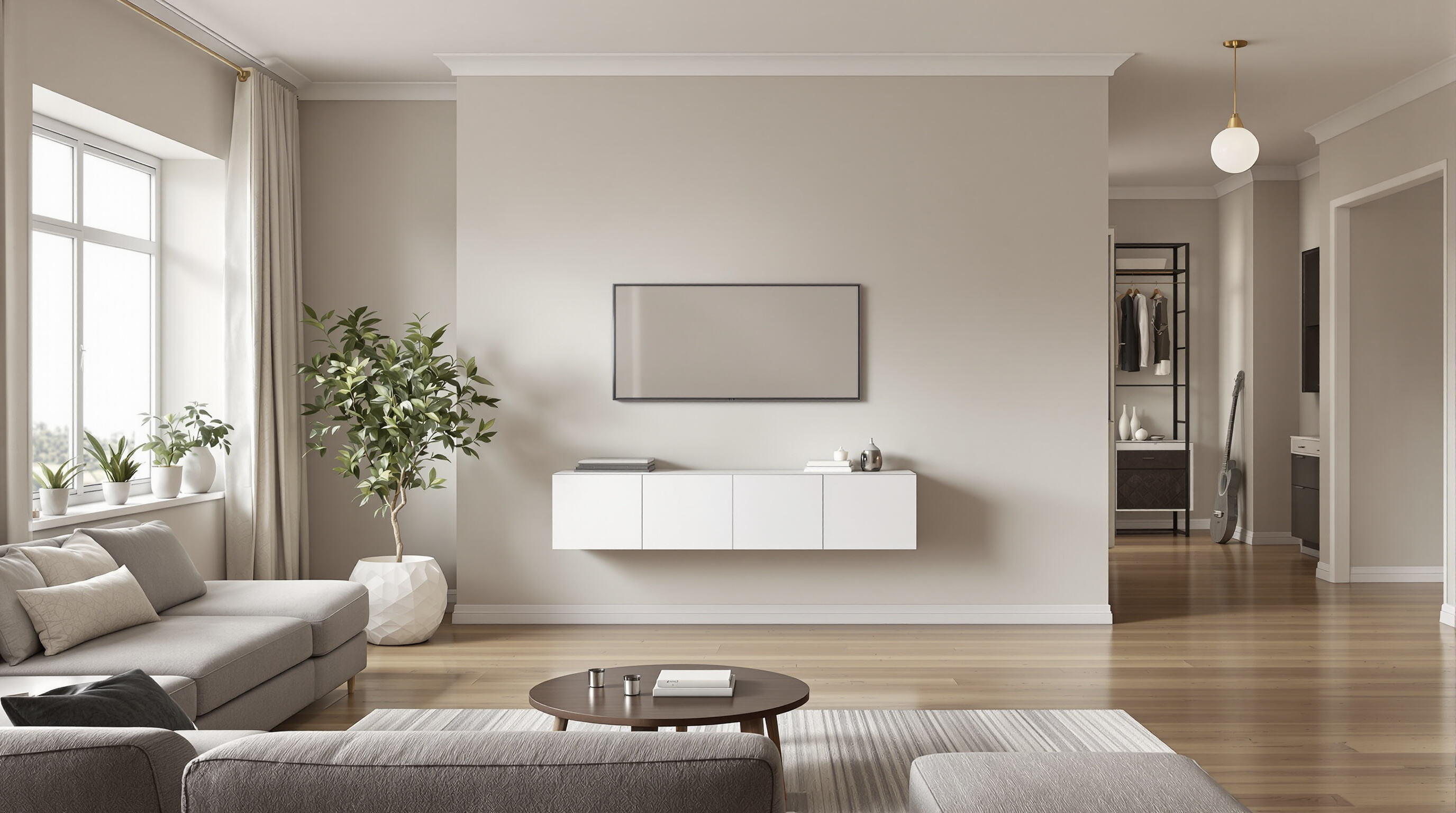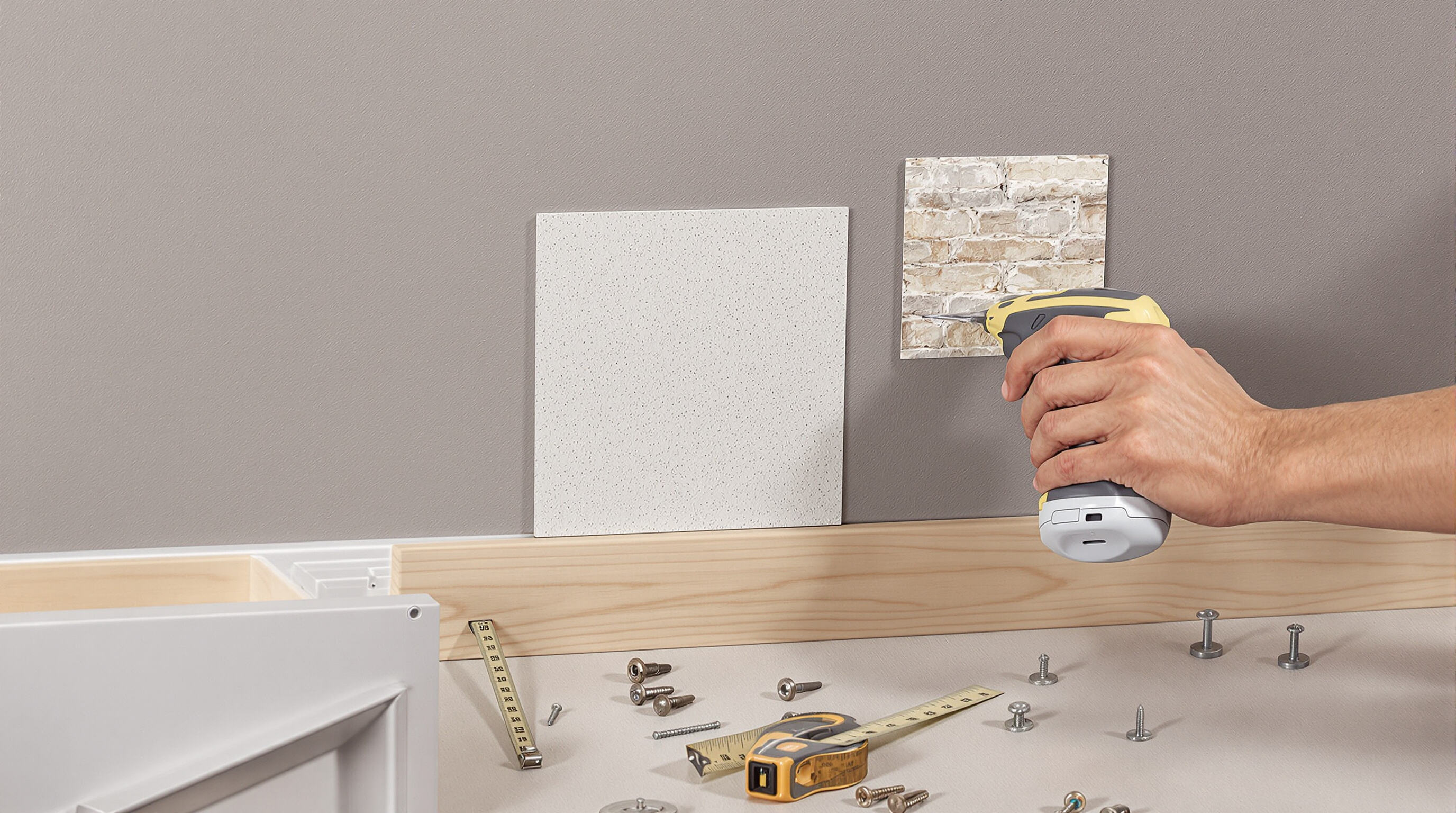Wall-Mounted Display Cabinets: Installation Steps Explained
Planning the Ideal Placement for a Wall-Mounted Display Cabinet

Proper placement transforms a wall-mounted display cabinet from a functional storage solution to a focal point that enhances room aesthetics.
Understanding room layout and visual flow for optimal cabinet positioning
Position the cabinet where it complements existing sightlines—typically opposite entryways or adjacent to seating areas. Mounting at 60"67" from the floor (average adult eye level) ensures optimal visibility without neck strain. Maintain 14"18" of clearance from furniture edges to reduce visual clutter and allow easy access.
Measuring cabinet dimensions and clearance requirements
Check the cabinet’s width, depth, and weight before installation. For hinged doors, provide clearance equal to 110% of the cabinet depth—e.g., a 14" deep cabinet needs 15.4" of swing space. Use masking tape to outline the proposed wall position, helping visualize spatial relationships and avoid obstructions.
Evaluating traffic patterns and viewing angles for accessibility and impact
Make sure cabinets stay clear of busy walkways and swinging doors, ideally keeping them around 3 feet away from these spots. Tilting the cabinet between 15 to 20 degrees towards where people sit actually makes items inside much easier to see. Some studies suggest visibility goes up nearly two thirds when angled rather than mounted straight on the wall, according to research published by Consumer Ergonomics Institute back in 2022. Also important is avoiding placement near heating ducts or those sunny windows that get more than three hours of direct light each day. Prolonged exposure can really take a toll on things like photographs, fabrics, or other delicate materials stored inside.
Assessing Wall Support and Weight Capacity for Safe Installation

Determining Wall Type: Drywall, Plaster, or Masonry Considerations
What kind of wall we're dealing with makes all the difference for safe installations. Standard drywall will hold around 50 pounds if we use those toggle bolts, though plaster walls need some extra care. For these older surfaces, drilling pilot holes first and then securing with proper screws helps avoid cracks forming later on. Brick and concrete walls are definitely our best bet for heavy stuff, capable of supporting anywhere from 200 to 500 pounds when installed correctly with the right masonry anchors. A word of warning about veneer brick or those hollow blocks though. These materials just aren't as strong as they look, often cutting down what they can actually hold by somewhere between 40 and 60 percent compared to solid construction.
Matching Cabinet Weight to Wall Load Capacity and Stud Placement
Wood studs spaced 16" apart safely support 75"125 lbs when secured with lag bolts. For cabinets over 50 lbs, distribute weight across two or more studs using steel brackets. Avoid drywall-only mounts for heavy units—installations exceeding 25 lbs risk anchor failure without stud support.
Understanding the Limitations and Risks of Drywall Anchors vs. Stud Mounting
Plastic drywall anchors typically fail under 10"30 lbs with vibration, making them unsuitable for glass-front or frequently accessed cabinets. Stud mounting transfers weight directly to the building’s frame, eliminating shear failure risks. Reserve anchors for displays under 20 lbs in low-traffic areas; prioritize stud-based mounting for permanent, heavier installations.
Essential Tools and Materials for Installing a Wall-Mounted Display Cabinet
List of Required Tools: Drill, Level, Stud Finder, Tape Measure, and Fasteners
A complete toolkit ensures accurate, secure installation. Use a cordless drill for pilot holes and screw driving, paired with a laser level for alignment. A stud finder locates load-bearing framing, while a tape measure verifies spacing from architectural features. Include wood screws (8—10 gauge) and corrosion-resistant anchors as key fasteners.
Selecting the Right Mounting Hardware: Brackets, Screws, and Anchors
When picking out hardware, always consider what kind of wall we're dealing with plus how heavy those cabinets actually are. French cleats provide pretty solid support that stays hidden from view, capable of holding around 150 pounds if properly attached to wall studs. L-brackets give us flexibility in where things go, though they demand careful placement since even small misalignments can cause problems later on. Getting the right screw length matters too. For regular drywall installed over studs, 1.5 inch screws generally do the trick. But when working with masonry walls, longer 2.5 inch screws tend to perform better. Toggle bolts will handle weights up to about 75 pounds in drywall situations, whereas plastic expansion anchors shouldn't be trusted with anything heavier than roughly 35 pounds before they start showing their limits.
Comparing Anchor Types by Load-Bearing Capacity and Wall Compatibility
Anchor performance varies significantly by material and load:
| Anchor Type | Max Load (Drywall) | Best For |
|---|---|---|
| Plastic Expansion | 35 lbs | Small cabinets, photo frames |
| Toggle Bolt | 75 lbs | Medium displays, shelves |
| Wedge Anchor | 200 lbs | Masonry walls, heavy cabinets |
Avoid “universal” anchors for cabinets over 50 lbs. When studs aren’t accessible, distribute weight using multiple anchors spaced 16"24" apart to reduce shear stress.
Locating Studs and Preparing the Wall for Secure Mounting
Using a stud finder and measurement techniques to identify stud positions
Before getting started, make sure to calibrate the electronic stud finder according to what the manufacturer says in their manual. Then go ahead and scan along the wall at a steady pace, taking care to mark out both sides of every stud that shows up. When working with plaster walls or masonry surfaces, grab a magnetic detector instead for spotting those hidden fasteners within the frame. Double check where things are located too. Most of the time, studs tend to line up nicely with electrical outlets, light switches, or even room corners. Taking this methodical approach really pays off. Studies show folks who rush through this process end up making mistakes about 40% more frequently than those who take their time and follow proper procedure step by step.
Marking drill points accurately with a level and masking tape
Align bracket holes with stud centers, then use painter’s tape to create temporary guides that minimize wall damage during adjustments. Apply a 24-inch level vertically to ensure plumb lines, marking drill points at 16-inch intervals to match standard stud spacing. Confirm consistency across multiple marks before drilling.
Drilling pilot holes and installing anchors for drywall installations
When drilling holes for anchors, go with a bit that's about a quarter smaller than what the anchor needs. This helps keep those pesky cracks from forming in the drywall later on. If there's no access to wall studs behind the cabinet, then look for toggle bolts that can handle at least three quarters of whatever weight the cabinet actually has. Twist them in clockwise direction until they sit flat against the surface while keeping constant downward pressure during installation. Always give each fastener a quick tug test after installation too. We've seen studies show something crazy - around 6 out of every 10 mounting problems come from anchors that weren't properly secured. Don't want your expensive new cabinet falling off the wall because someone skipped this simple check!
Step-by-Step Installation and Final Alignment of the Display Cabinet
Attaching Mounting Brackets to the Wall and Cabinet Frame
Line up those brackets with where we marked the drill spots first. Grab that 4 foot level and check things are straight horizontally. Once aligned, drill some pilot holes through the studs or wherever anchors need to go. Then attach the brackets to both sides - wall and cabinet - using screws in a staggered pattern so weight gets spread out evenly across the whole setup. The way these brackets are positioned actually makes them stronger against sideways forces too. Tests showed around a 23 percent boost in resistance compared to when everything lines up perfectly straight end to end according to research published in an architectural engineering journal back in 2021.
Hanging the Cabinet Using French Cleats or L-Brackets with Precision
For heavy displays over 50 lbs, French cleats provide superior interlocking support and weight distribution. L-brackets suit lighter or flush-mounted units where minimal hardware visibility is preferred. Maintain 0.5"1" clearance behind the cabinet for ventilation and cable management.
| Mounting Type | Best Use Case | Weight Capacity |
|---|---|---|
| French Cleat | Heavy collectibles (>50 lbs) | Up to 200 lbs |
| L-Bracket | Medium displays (202050 lbs) | Up to 75 lbs |
Leveling and Aligning the Wall-Mounted Display Cabinet for a Polished Finish
After hanging, verify alignment with a laser level. On drywall, tighten anchors gradually in an alternating sequence to prevent wallboard compression. Use silicone-based shims behind the cabinet frame for minor adjustments (±3mm) to achieve perfect horizontal alignment and a professional finish.
FAQ Section
What is the ideal height for mounting a display cabinet?
The ideal height for mounting a display cabinet is between 60" and 66" from the floor, which aligns with the average adult eye level, ensuring visibility without neck strain.
How much clearance should be left around the cabinet?
Leave 14" to 18" of clearance from furniture edges to reduce visual clutter and allow easy access to the cabinet.
What are the considerations for wall type when installing cabinets?
The type of wall (drywall, plaster, or masonry) is crucial for safe installation. Different walls require specific anchors and screws, and the weight capacity varies accordingly.
Why should cabinet viewing angles be considered?
Cabinet viewing angles should be considered to enhance accessibility and visual impact. Tilting the cabinet 15 to 20 degrees towards seating areas improves item visibility by nearly two-thirds.
What tools are necessary for installing a display cabinet?
Essential tools include a drill, level, stud finder, tape measure, and appropriate fasteners like screws and anchors based on wall type and cabinet weight.
